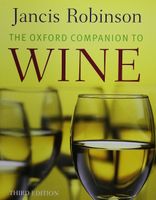Advertisement
Tasting: How we taste
Published 2006
Most of what is commonly called the sense of taste is in fact the sense of smell, whether applied to wine, or any food or drink, since by chewing we transform our food into liquid which gives off smellable vapour. To verify this it is enough to eat or drink something with the nose pinched shut, or to consider the extent to which we ‘lose our appetite’ when we have a head cold which blocks the nose. The human brain senses what we call flavours and aromas in the olfactory bulb, which, as Buck and Axel so elegantly demonstrated in their Nobel prize-winning work, is reached via a thousand different olfactory receptor cells, each expressing a single odorant receptor gene, these genes representing about 3% of an individual’s genetic make-up. Unexpectedly, each olfactory receptor cell is sensitive to a very small group of related aromas. From the olfactory bulb these messages are sent to other parts of the brain and processed, combining them and forming a pattern. Most aromas are made up of many different molecules, each of which activates several of these olfactory receptors, making odorant patterns, so that humans are able to recognize and, particularly, memorize up to 10,000 different aromas. The olfactory bulb is reached mainly by the nostrils, and to a lesser extent by a channel at the back of the mouth called the retronasal passage (which is why most healthy people can still perceive some flavour even if they do not consciously smell what they consume). The human olfactory sense is extremely acute and possibly as acute as that of most mammals. Concentrations of some compounds of one part per trillion (see Bushdid et al.) can be sensed, recognized, and remembered by the average person. A single whiff can transport us immediately to something experienced many years before.


